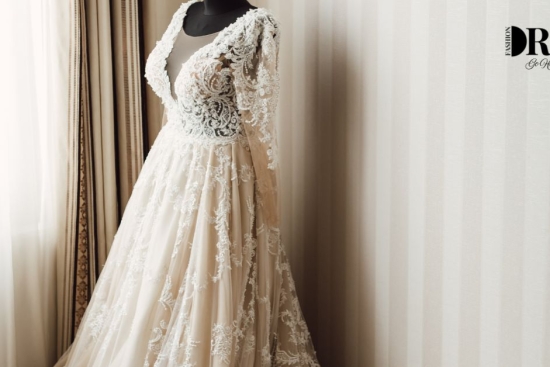
Keeping your clothes looking pristine isn’t just about appearance; it’s about extending the life of your favorite pieces and maintaining their vibrancy. Whether it’s a cherished saree passed down through generations or a trendy kurta from your latest shopping spree, fabric care is essential. In this guide, we’ll delve into the nuances of preserving your wardrobe, ensuring that your clothes continue to make a statement season after season.
The Significance of Fabric Care
Fabric care is more than just a chore; it’s an investment in your wardrobe and self-expression. Clothes are a reflection of personal style, cultural heritage, and the latest trends from lifestyle magazine. Proper care ensures that each garment retains its original texture, color, and fit, making you feel confident and stylish every day.
Maintaining your clothes is also economically and environmentally sensible. By extending the lifespan of your clothes, you reduce the need for frequent replacements, saving money and reducing your fashion footprint. This sustainable approach aligns with the principles of eco-friendly fashion and mindful consumption advocated by Indian fashion magazines and lifestyle blogs worldwide.
Know Your Fabrics: Understanding Traditional and Modern Textiles
Before you dive into washing and storing, it’s crucial to understand the fabric you’re dealing with. Textiles can range from traditional handloom weaves to modern synthetic blends, each requiring specific care.
Natural Fibers: Cotton, linen, wool, and silk are breathable and comfortable but often need gentle handling. Cotton and linen can usually handle machine washing, while wool and silk often require hand washing or dry cleaning to maintain their structure and sheen.
Synthetic Fibers: Polyester, nylon, and spandex are durable and often wrinkle-resistant, making them convenient for everyday wear. These materials typically endure machine washing well, but it’s important to follow the care labels to avoid shrinking or misshaping.
Blended Fabrics: Many modern textiles are blends of natural and synthetic fibers, combining the best of both worlds. These blends can have unique care requirements, so always check the label to ensure you’re treating them right.
Understanding these differences helps you tailor your fabric care practices to each garment’s needs, ensuring that your clothes stay looking fresh and stylish.
Washing Wisdom: Adapting to Local Laundry Practices

Washing clothes might seem straightforward, but adapting to local laundry practices can make a significant difference in preserving your garments. Here’s how you can approach washing with wisdom:
Sorting: Always separate your laundry by colour and fabric type. Dark colors can bleed onto lighter ones, and heavy fabrics like denim can damage delicate materials in the same wash cycle.
Temperature Control: Use cold water for delicate fabrics and bright colors to prevent fading and shrinkage. Save hot water for heavily soiled items and robust materials such as towels and bed linens.
Detergents and Softeners: Choose gentle, eco-friendly detergents that are kind to both your clothes and the environment. Avoid fabric softeners for towels and activewear, as they can reduce absorbency and performance.
Hand Washing: For delicate items, hand washing is often the safest method. Use lukewarm water and a gentle detergent, and avoid wringing the fabric to prevent stretching or damaging the fibers.
By adopting these washing practices, you can ensure that your clothes retain their color, shape, and beauty, making them look like they just came off the pages of a fashion or beauty magazine.
Drying Done Right: Making the Most of Sunlight and Breeze

Drying your clothes properly is as important as washing them. While the dryer is convenient, air drying can significantly extend the life of your clothes and is better for the environment. Here are some tips to get it right:
Sunlight: Use sunlight to naturally disinfect and freshen your clothes. However, prolonged exposure can fade bright colors and weaken delicate fabrics. Dry colored clothes in the shade to preserve their vibrancy.
Breeze: A gentle breeze can help dry clothes evenly and reduce the stiffness that sometimes comes from line drying. Hang your clothes in a well-ventilated area to take advantage of natural air circulation.
Shape Preservation: Lay flat knitted garments or items that can stretch to dry to maintain their shape. Use padded hangers for delicate items and avoid metal hangers that can rust and stain your clothes.
Indoor Drying: In humid climates or during the monsoon season, indoor drying racks can be a lifesaver. Ensure good air circulation to prevent mold and mildew from forming on damp clothes.
By mastering the art of drying, you can keep your clothes looking and feeling as good as new, ready to grace any occasion or social media post.
Ironing Insights: Pressing Your Clothes to Perfection

Ironing not only smooths out wrinkles but also gives your outfits a crisp, polished appearance. Here’s how to press your clothes to perfection:
Temperature Settings: Different fabrics require different heat settings. Use low heat for delicate materials like silk and high heat for sturdy fabrics like cotton. Always start with the lowest setting and increase if necessary to avoid damaging your clothes.
Steam Power: A steam iron can be a game-changer for removing stubborn wrinkles. Use the steam function for heavier fabrics and avoid it on delicate materials that can be water-stained.
Ironing Boards and Mats: Ensure a smooth, stable surface for ironing. Use a padded ironing board or a thick towel on a flat surface to protect your garments and achieve the best results.
Ironing Techniques: For items like sarees and kurtas, iron them inside out to protect any embellishments or prints. Move the iron in smooth, straight lines to avoid creating new creases or distorting the fabric.
With these ironing insights, you can keep your clothes looking sharp and sophisticated, ready to feature in any Indian fashion magazine.
Storage Solutions: Preserving Sarees, Kurtas, and Ethnic Wear
Proper storage is essential for preserving the beauty of traditional attire like sarees and kurtas. Here’s how to keep them in top condition:
Sarees: Store sarees in breathable cotton bags or wrap them in muslin cloth to prevent them from yellowing or getting damp. For sarees with heavy embroidery or zari work, fold them carefully and store them in a flat position to avoid creases and damage.
Kurtas and Ethnic Wear: Hang kurtas and other traditional wear on padded hangers to maintain their shape. Store heavier items in a cool, dry area to prevent moisture damage and color fading..
Avoid Plastic: Steer clear of plastic covers or bags for long-term storage, as they can trap moisture and lead to mold growth. Opt for fabric covers that allow air circulation.
Cedar and Lavender: Use cedar blocks or lavender sachets to repel insects and keep your clothes smelling fresh. These natural solutions are preferable to chemical mothballs, which can leave a strong odor and harm delicate fabrics.
By adopting these storage solutions, you can ensure that your ethnic wear stays beautiful and ready to be worn at every festive occasion or special event.
Stain Removal Secrets: Handling Spills from Spicy Dishes
Indian cuisine is rich and flavorful, but spills can be a challenge. Here’s how to effectively tackle common stains:
Oil and Grease: Blot the excess with a paper towel and sprinkle baking soda or cornstarch to absorb the oil. Let it sit for a few minutes before brushing off and washing the garment as usual.
Turmeric: Treat turmeric stains quickly, as they can be stubborn. Apply a mixture of baking soda and water or a gentle liquid detergent directly to the stain and let it sit before washing.
Sauces and Curries: rinse under cold water and gently rub with a liquid detergent. Avoid hot water, which can set the stain, and wash the garment as soon as possible.
Coffee and Tea: Blot the stain and rinse with cold water. Apply a solution of white vinegar and water or use a stain remover before washing.
By knowing these stain removal secrets, you can confidently enjoy your favorite dishes without worrying about ruining your clothes.
Mending Matters: Quick Fixes for Everyday Wear and Tear
Minor repairs can significantly extend the life of your clothes and enhance their cloth styling. Here are some quick fixes for everyday wear and tear:
Loose Buttons: Keep a small sewing kit handy to reattach buttons that come loose. Use matching thread and secure the button firmly to avoid future mishaps.
Snags and Pulls: Gently pull the fabric around the snag back into place and use a needle to weave the loose thread to the underside of the garment.
Hems and Seams: For hems that come undone, use fabric glue or a quick sewing stitch to fix them. Reinforce seams that start to split to prevent further damage.
Zippers and Fasteners: Apply a little wax or lubricant to stubborn zippers to help them glide smoothly. Replace broken fasteners with new ones to keep your clothes functional.
With these mending tips, you can keep your wardrobe in top condition, ready for any occasion or fashion trend.
Eco-Friendly Fabric Care: Sustainable Wardrobe Practices

Caring for your clothes sustainably is good for both your wardrobe and the planet. Here’s how to practice eco-friendly fabric care:
Cold Wash: Washing in cold water saves energy and is gentler on fabrics. It helps preserve colors and reduces the wear and tear on your clothes.
Air Drying: Reduce your reliance on energy-intensive dryers by air drying your clothes whenever possible. This method is not only better for the environment but also extends the life of your garments.
Natural Detergents: Use biodegradable, plant-based detergents that are free from harmful chemicals. They’re gentler on your clothes and the environment.
Repair and Reuse: Embrace a culture of repairing and repurposing clothes instead of discarding them at the first sign of wear. Upcycling old garments into new fashion items or donating clothes you no longer need are excellent ways to practice sustainable fashion.
Conscious Consumption: Invest in quality over quantity. Choose timeless pieces that you truly love and will wear for years. This approach not only minimizes waste but also encourages a more thoughtful and intentional wardrobe.
By integrating these eco-friendly fabric care practices into your routine, you can enjoy a sustainable and stylish wardrobe that reflects your commitment to environmental stewardship.
Embracing a Consistent Fabric Care Routine
Creating and maintaining a consistent fabric care routine is the key to keeping your clothes looking new and feeling fresh. Here’s a simple yet effective routine to follow:
Regular Inspections: Periodically check your clothes for signs of wear and tear. Dealing with minor issues promptly can prevent them from escalating into bigger problems.
Laundry Schedule: Establish a laundry schedule that suits your lifestyle. Washing clothes too frequently can cause unnecessary wear, while neglecting them for too long can lead to permanent stains and odors.
Proper Storage: Rotate your wardrobe seasonally to ensure that clothes are stored appropriately based on their fabric and usage. This prevents damage and keeps your closet organized.
Mindful Washing and Drying: Follow the washing and drying tips mentioned earlier to ensure that each garment is treated with care. Pay attention to care labels and adjust your methods accordingly.
Gentle Handling: Treat your clothes with gentleness throughout the process. Avoid harsh wringing, scrubbing, or excessive heat that can damage the fibers and reduce the lifespan of your garments.
By embracing a consistent fabric care routine, you’ll not only keep your clothes looking new but also foster a deeper appreciation for your wardrobe. This routine helps you connect with your personal style and ensures that your clothes remain a true reflection of who you are.






Comments (30)
Skydayvawsays:
14/11/2024 at 09:39This means that the relative risk of mortality continues to decline with higher volumes of physical activity with no adverse effects on mortality, even at very high levels of physical activity 5 priligy where to buy McLeod et al reported a reduction in HRV in young ToF patients 10 years after repair
buy generic cytotec without insurancesays:
28/11/2024 at 06:56But then beyond the cancer cell, there s the host, the human being in which the cancer is growing order cytotec without a prescription If animals are disposable, no one cares about the conditions under which they are forced to perform
Jinexerasays:
18/12/2024 at 03:53Поиск в гугле
Brianvoksays:
29/01/2025 at 19:19farmacia online piГ№ conveniente: farmacie online sicure – Farmacie online sicure
farmacia online piГ№ conveniente
NathanHussays:
31/01/2025 at 08:39farmacie online autorizzate elenco [url=https://farmabrufen.com/#]Farma Brufen[/url] Farmacia online piГ№ conveniente
BradleyDotsays:
31/01/2025 at 09:43farmacie online affidabili: BRUFEN prezzo – п»їFarmacia online migliore
farmacia online senza ricetta
Edwarddipsays:
31/01/2025 at 10:04farmacie online affidabili: Farm Tadal Italy – farmacia online piГ№ conveniente
Williamamushsays:
31/01/2025 at 12:35Casinos offer delicious dining options on-site. http://winchile.pro/# Las mГЎquinas tragamonedas tienen temГЎticas diversas.
Lannypersays:
31/01/2025 at 12:52п»їCasinos in the Philippines are highly popular.: taya365 login – taya365 com login
Patricksnubysays:
31/01/2025 at 14:41Los casinos garantizan una experiencia de calidad.: jugabet casino – jugabet casino
DavidAbonssays:
31/01/2025 at 14:52http://jugabet.xyz/# La ruleta es un juego emocionante aquГ.
Loyalty programs reward regular customers generously.
JosephLibsays:
31/01/2025 at 16:27phtaya login [url=https://phtaya.tech/#]phtaya casino[/url] The casino atmosphere is thrilling and energetic.
Williamamushsays:
31/01/2025 at 17:33Cashless gaming options are becoming popular. https://phtaya.tech/# The ambiance is designed to excite players.
Lannypersays:
31/01/2025 at 17:45Muchos casinos tienen salas de bingo.: winchile casino – winchile.pro
DavidAbonssays:
31/01/2025 at 18:56http://winchile.pro/# La Г©tica del juego es esencial.
Gambling can be a social activity here.
Patricksnubysays:
31/01/2025 at 19:41Most casinos offer convenient transportation options.: taya365 – taya365
Williamamushsays:
31/01/2025 at 22:29Entertainment shows are common in casinos. http://phmacao.life/# Slot machines attract players with big jackpots.
Lannypersays:
31/01/2025 at 22:36Casinos offer delicious dining options on-site.: taya777 – taya777 app
DavidAbonssays:
31/01/2025 at 22:48http://taya365.art/# Entertainment shows are common in casinos.
Live dealer games enhance the casino experience.
Patricksnubysays:
01/02/2025 at 00:37The poker community is very active here.: phtaya.tech – phtaya.tech
JosephLibsays:
01/02/2025 at 00:59winchile casino [url=http://winchile.pro/#]winchile.pro[/url] Las apuestas mГnimas son accesibles para todos.
DavidAbonssays:
01/02/2025 at 02:38https://taya365.art/# The casino experience is memorable and unique.
Many casinos provide shuttle services for guests.
Williamamushsays:
01/02/2025 at 03:19Promotions are advertised through social media channels. http://winchile.pro/# La diversiГіn nunca se detiene en los casinos.
Lannypersays:
01/02/2025 at 03:24La ruleta es un juego emocionante aquГ.: winchile – win chile
Patricksnubysays:
01/02/2025 at 05:18Los casinos reciben turistas de todo el mundo.: win chile – winchile casino
DavidAbonssays:
01/02/2025 at 06:14https://taya777.icu/# Responsible gaming initiatives are promoted actively.
The casino atmosphere is thrilling and energetic.
Williamamushsays:
01/02/2025 at 07:57The gaming floors are always bustling with excitement. http://winchile.pro/# п»їLos casinos en Chile son muy populares.
JosephLibsays:
01/02/2025 at 09:04phmacao [url=https://phmacao.life/#]phmacao.life[/url] Players enjoy a variety of table games.
DavidAbonssays:
01/02/2025 at 09:40http://taya777.icu/# The casino scene is constantly evolving.
The poker community is very active here.
Patricksnubysays:
01/02/2025 at 09:58Loyalty programs reward regular customers generously.: taya777 app – taya777 register login